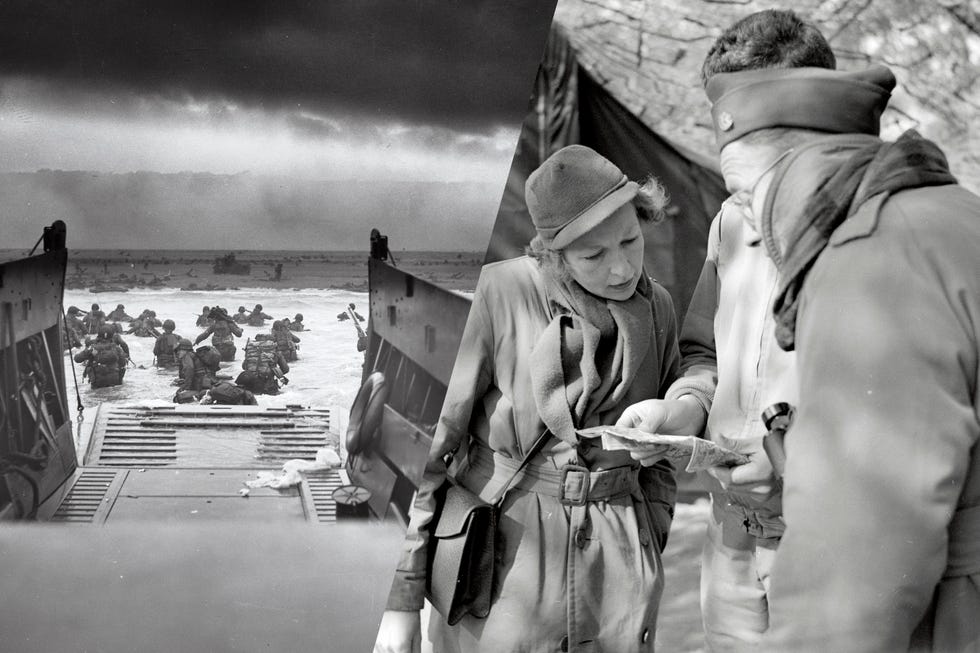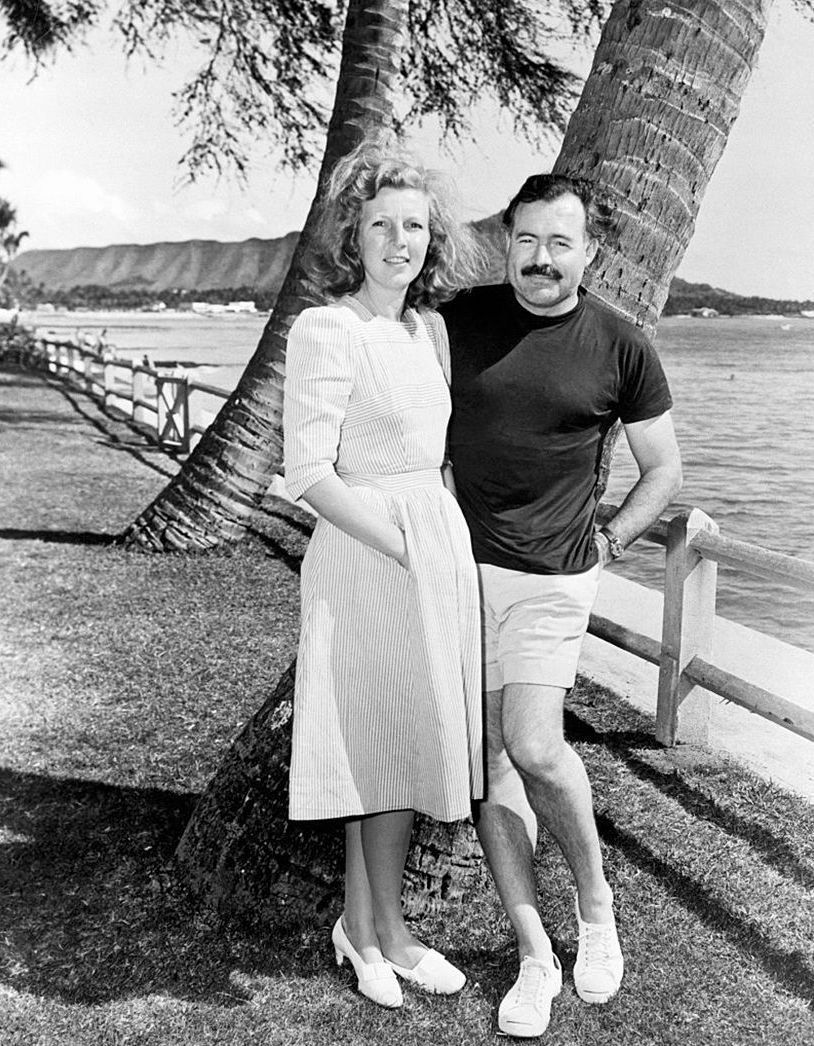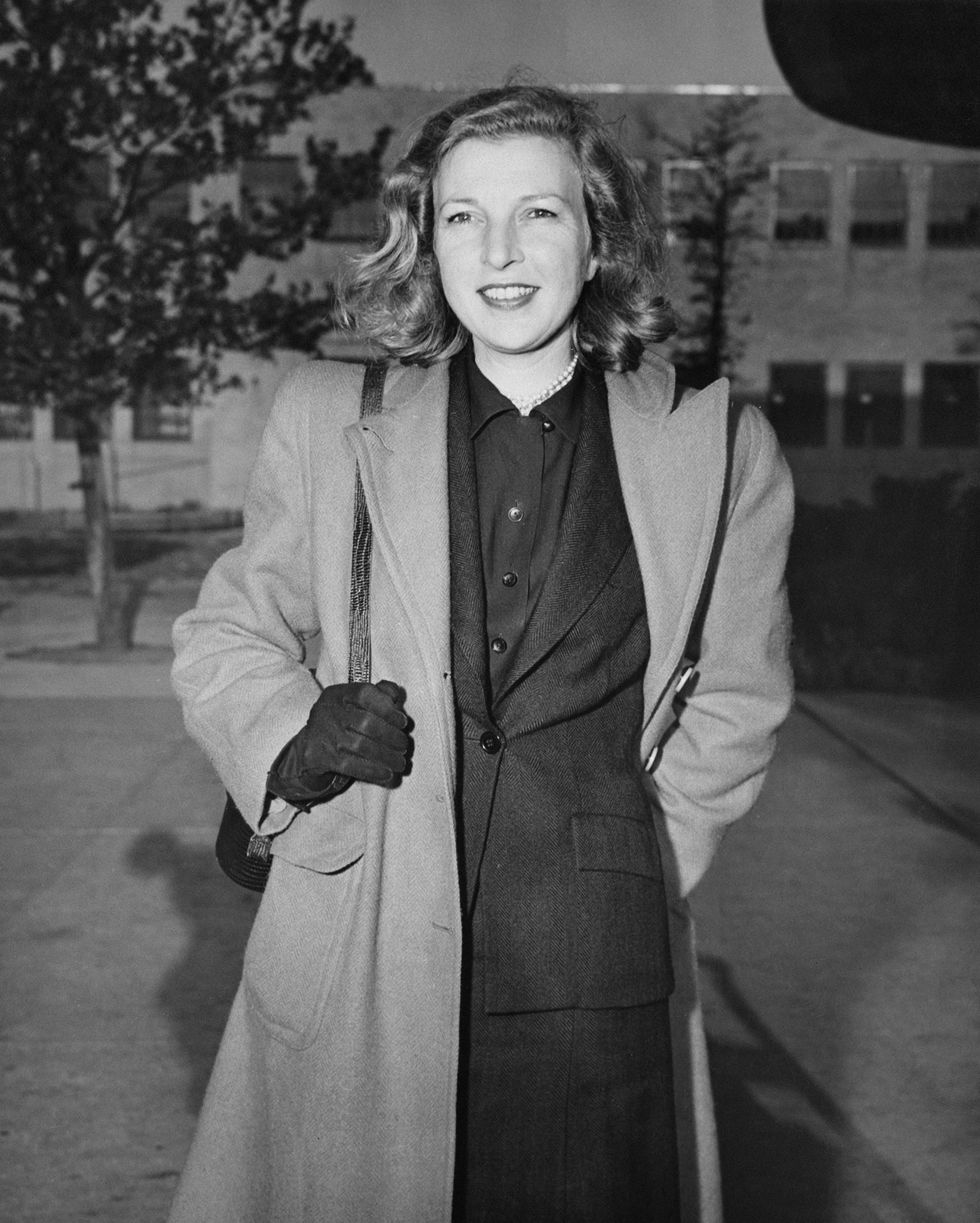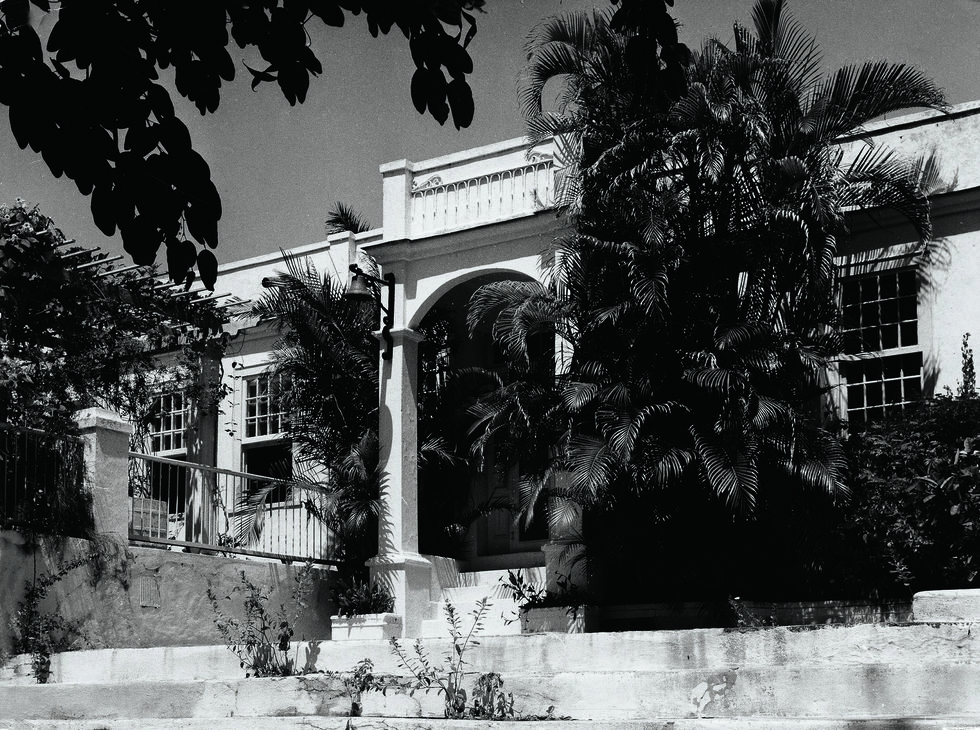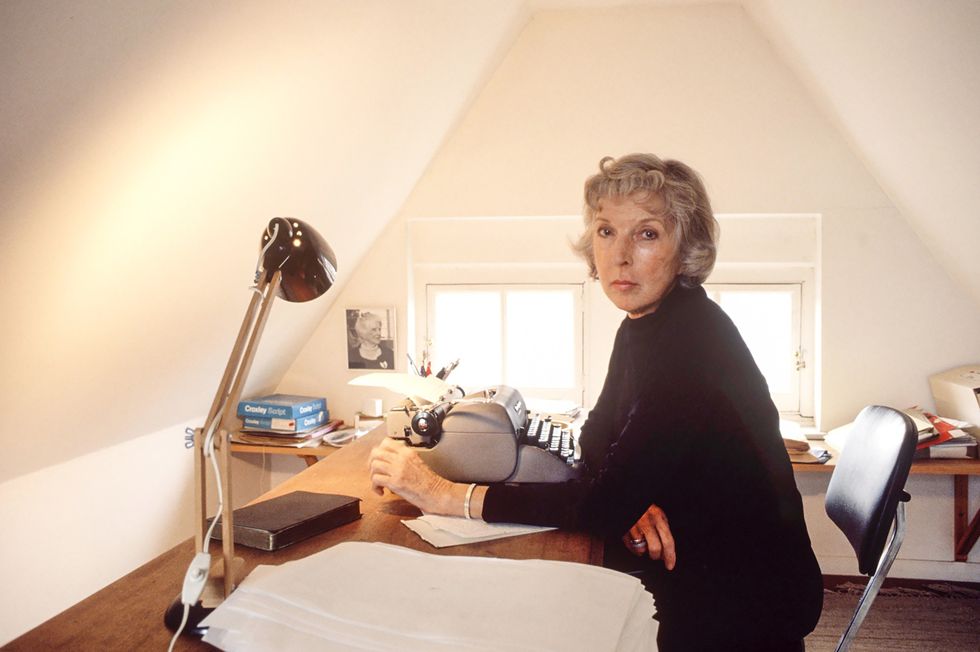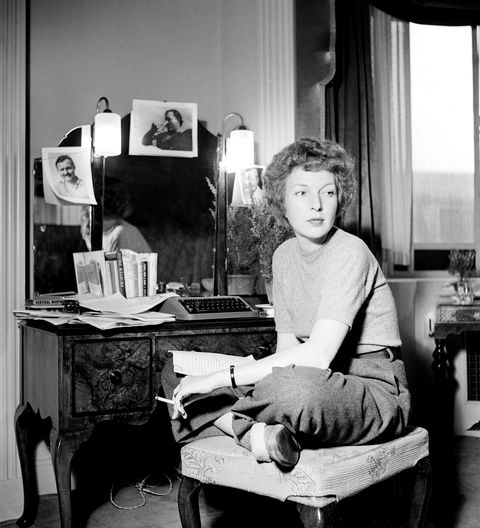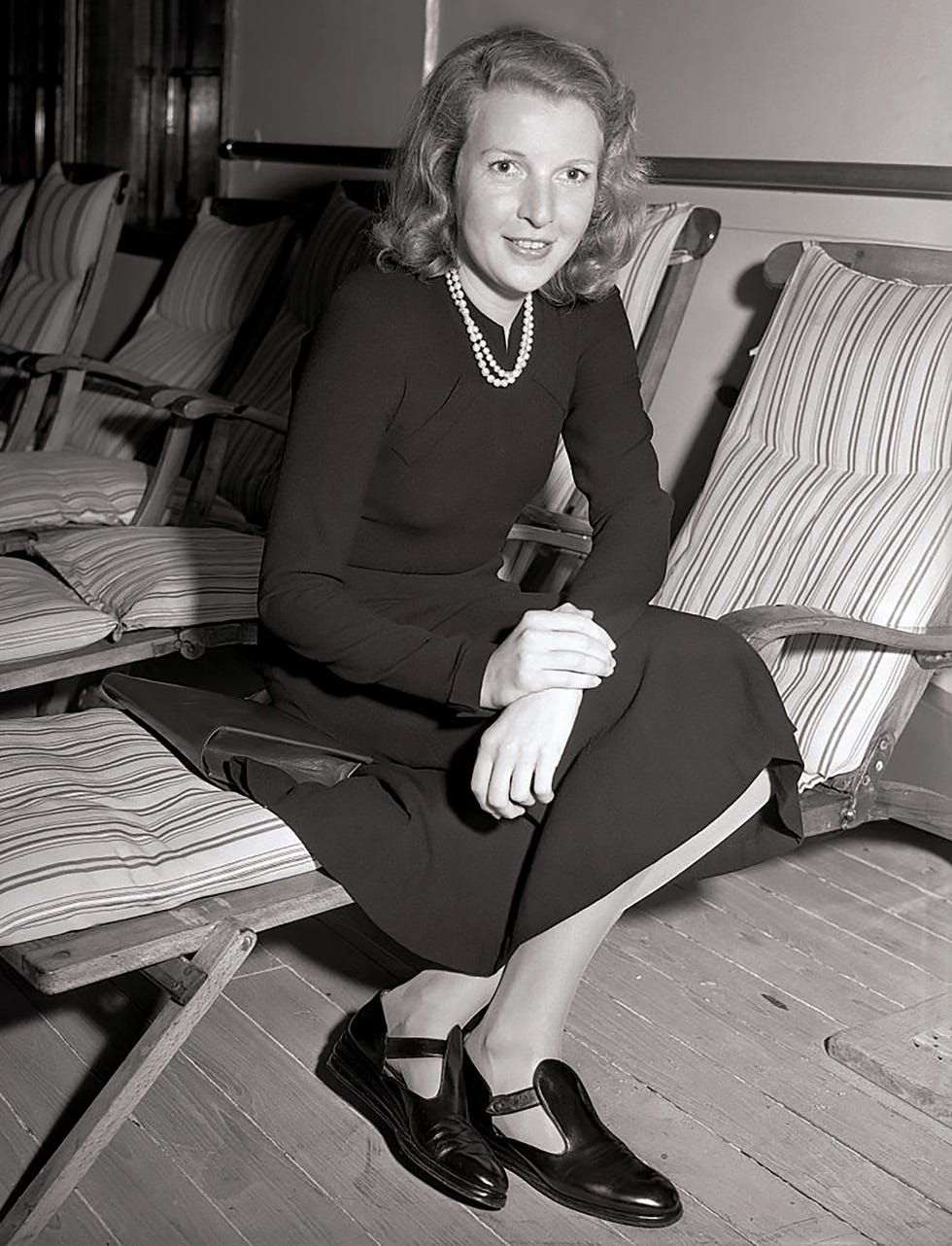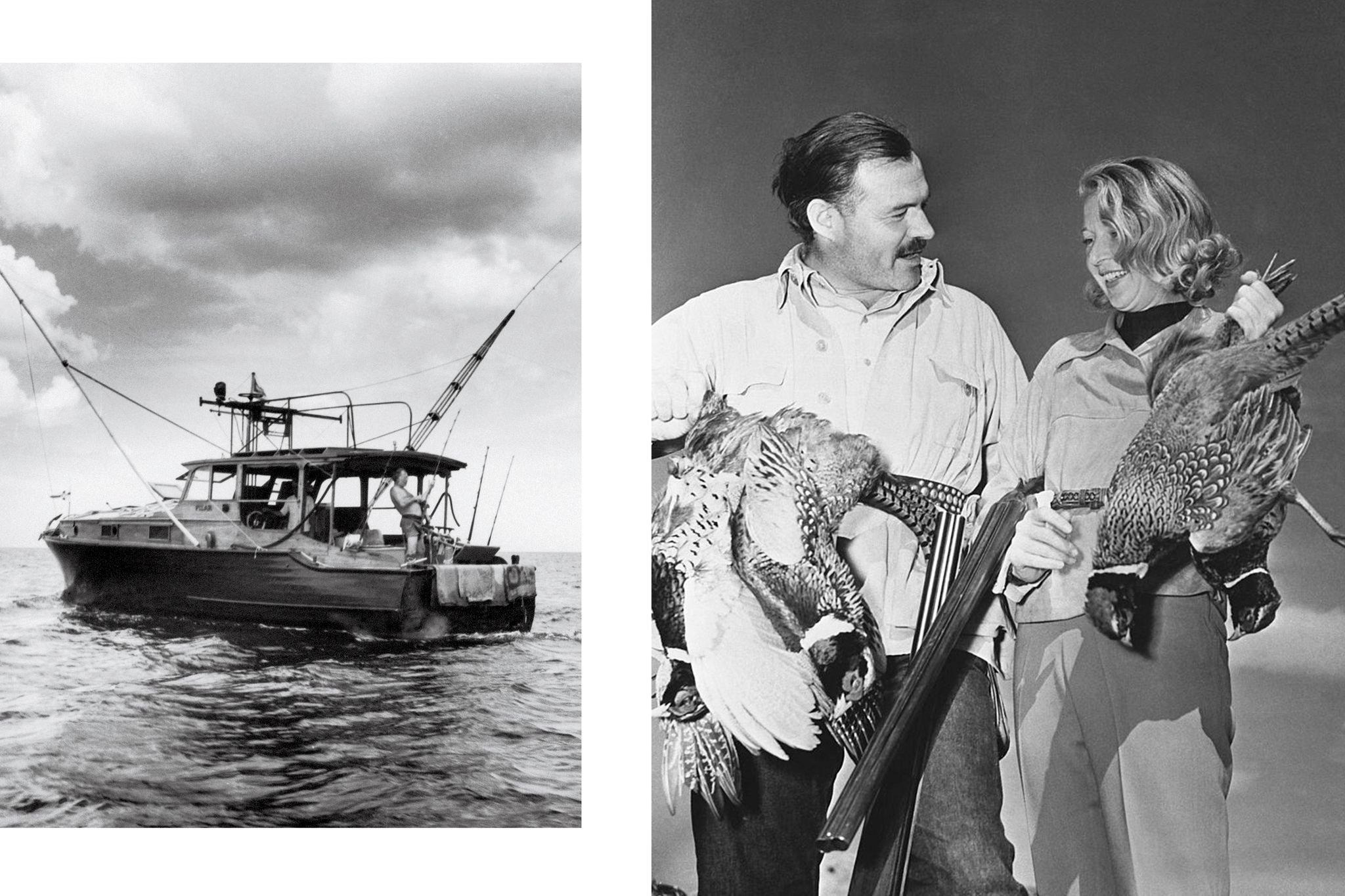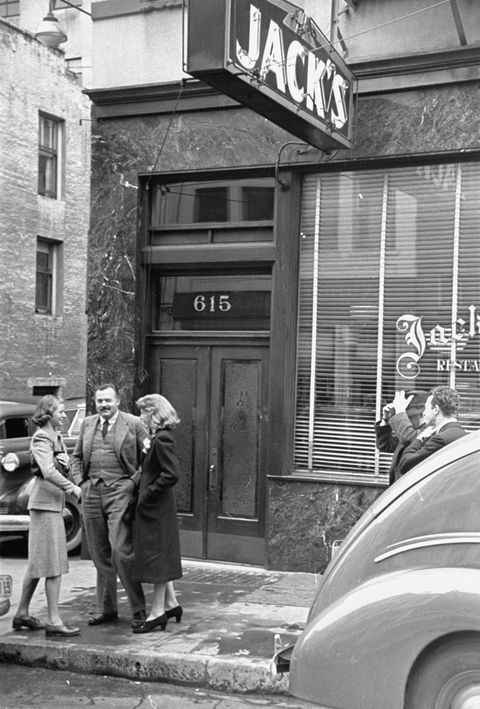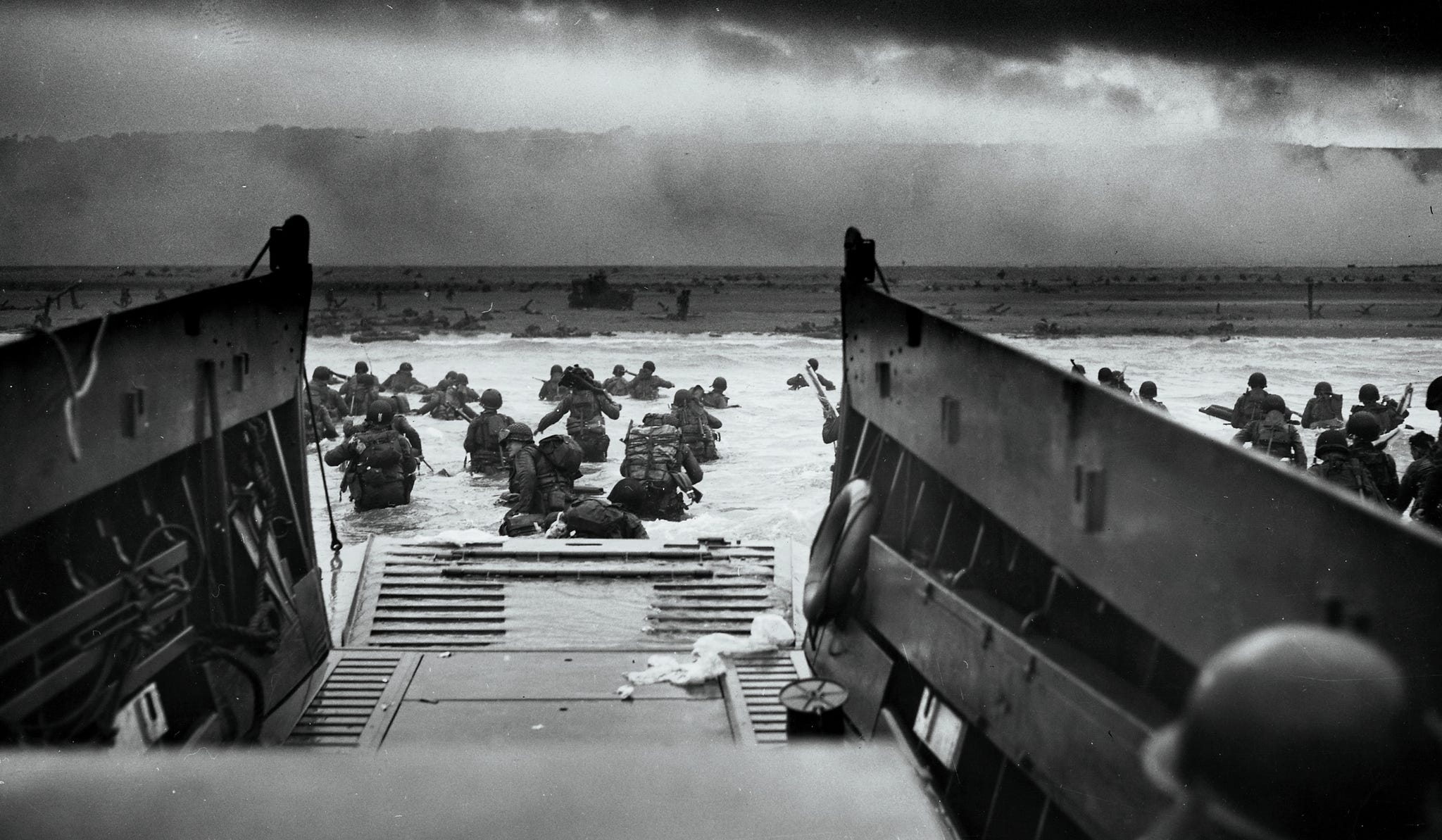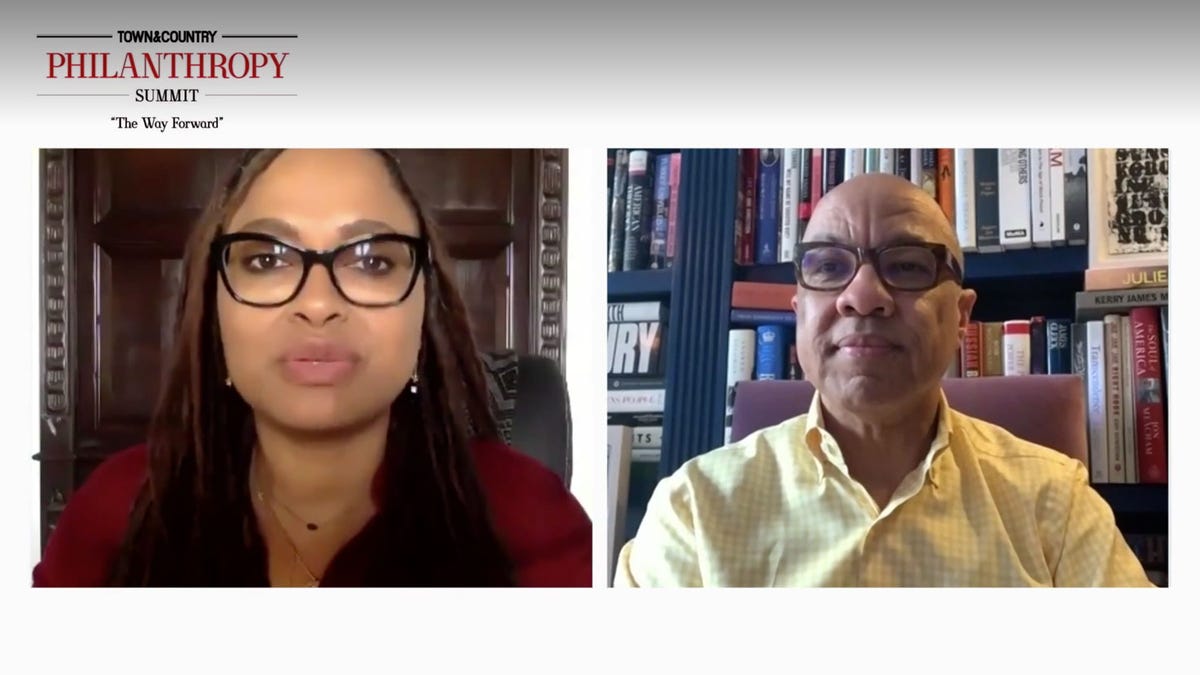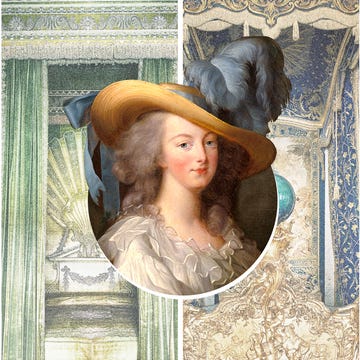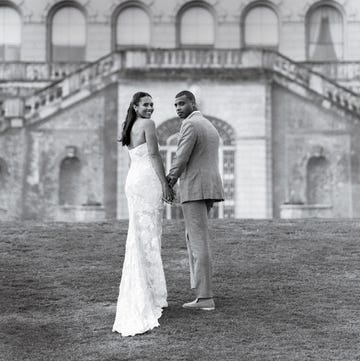One sultry morning last June, I hired a car to take me from beautifully ruinous Old Havana, through ravaged parts of the city most tourists never see, to the nearby village of San Francisco de Paula, a dusty speck of a place that was once home to Cuba’s most famous American expat, Ernest Hemingway.
Having painted him into two historical novels and become an accidental aficionado of his life, I have made it a point to visit all of Hemingway’s residences—from Oak Park to Paris, from Key West to Ketchum—but this time I actually came looking for someone else: his third wife, Martha Gellhorn. It was she who found the 19th-century estate Finca Vigía (Watchtower Farm) in the want ads of a local paper in 1939, and she who undertook extensive renovations, at her own expense.
The couple had just come from Spain, where they had lived side by side as international correspondents and clandestine lovers in Madrid's Hotel Florida, a mile's walk from one of the fronts in the Spanish Civil War and the target of frequent shell attacks by Franco's artillery. This, her first war, took every ounce of Gellhorn's courage, and it changed her in innumerable ways. And yet somehow house hunting in Cuba took even more bravery.
Franco had gutted Spain, Hitler was on the loose in Europe, and nations were tumbling ever faster toward world war. Nearer by, her lover was legally bound to another: wife number two, Pauline Pfeiffer, mother of two of his sons. Cuba, for him, was the perfect bolt-hole. But for Gellhorn, seeking happiness under these circumstances was a dangerous, even radical, act.
I think of her driving out of town, just as I did. How she must have climbed the hill, squinting against the sun, breathing in crepe myrtle and bougainvillea, trying to guess at the future. The house had been abandoned for years, with peeling stucco, a half-buried swimming pool, the jungle encroaching on every side. But rooted to the front steps was an enormous ceiba tree, with orchids growing out of the gnarled, hide like trunk. It seemed to be the soul of the farm, she would later write, and it spoke to her in the deepest way, promising safety and love and belonging, if she could possibly bear to ask for them.
It’s this inner tension, this struggle for equilibrium, that I have come so far to explore. I’m determined to see the Finca for myself, to search out Gellhorn precisely where she met her match—not at any of the dozens of conflicts she covered in her long and matchless career as a war correspondent, but the first place she pitted hope against anxiety, love against ruin—taking a fragile shot at happiness and that even more elusive thing: home.
Not that it was going to be easy. The Finca has been a museum (Museo Hemingway Finca Vigía) since just after the writer committed suicide, in 1961. Each year between 80,000 and 120,000 visitors come up the lane to pay about $5 to look in the open windows, for while the grounds are accessible and all the entrances are flung wide, the house itself is permanently cordoned off to preserve its contents.
I’m determined to get in and have pleaded my case for months to the Cuban government and the museum’s director, stating my seriousness as a researcher and Hemingway scholar. After letters faxed and e-mailed, and a good bit of nail-biting, I finally got my golden ticket.
Ada Rosa Alfonso, the current director, is an unassuming middle-aged woman with flyaway red-tinted hair and an abiding passion for all things Hemingway. Luckily, she has read my novel The Paris Wife, about Hemingway’s literary apprenticeship and his first spouse, Hadley Richardson, and she sees me as an ally. When we meet at the staff offices, she offers to give me a personal tour and asks where I’d like to begin.
Hemingway lived here for more than 20 years, from 1939 until the early days of Fidel Castro’s violent takeover. When he was forced to abandon the property, in July 1960, not knowing whether he would ever return, he left everything behind: clothing, furniture, whiskey, paintings by Braque and Juan Gris and Masson, and thousands upon thousands of books. It’s all still here, a virtual time capsule—and his boat too, the Pilar, which he loved with more devotion, arguably, than he did any of his four wives. Yet what I want to see first, and more than anything else, is Gellhorn’s beloved ceiba tree.
As we approach the house, a low, creamy, open structure, I notice that a ceiba does indeed sprout from the steps. But just as I get excited, Alfonso informs me that it’s an impostor. The original tree was removed in the 1950s because it threatened the foundations of the house. I am sadder than I would have imagined possible to learn that it’s gone. I try to explain my disappointment and the personal symbolism of the tree to Alfonso, but I find I can’t. Still, the house itself beckons.
What’s more alluring than rarely granted permission? Past the rope barricades at the broad front entrance, there’s an expanse of marigold-yellow Spanish tiles, and an invitation to time travel. The 50-foot-long living room, flooded with sunlight, still holds the stuffed chintz chairs Gellhorn selected nearly 80 years ago and the sofa Clark Gable slept on (he complained that the guest beds were too short).
The animal heads on the walls (which Gellhorn loathed and chided Hemingway about) are from a 1934 Africa safari he had gone on with Pfeiffer. Books are everywhere, covered with dust and fingerprints. I half expect the phonograph to flare to life with Fats Waller, or Chopin’s Mazurka in C Major. They both learned to love that piece in Madrid, playing it on Hemingway’s gramophone as the shells rained down and the ceiling shook.
I want to find more evidence of Gellhorn, but that’s an impossible task in the south-facing bedroom, where one closet is full, floor to ceiling, of Hemingway’s shoes, and tourists press in from the bathroom windows, hoping to touch his blue-patterned shower curtain and read the pencil marks covering one wall that record the rise and fall of his weight (along with small parenthetical annotations by him, such as “after trip drinking lots of beer”).
This is the bedroom where Hemingway worked. He wrote the bulk of For Whom the Bell Tolls here, beginning in April 1939. His desk is covered with talismans: a bowl of smooth stones, another of hotel keys, a careful line of wooden and stuffed toy animals he was sent for various birthdays. He didn’t write at the desk but over by the bookcase along the west-facing wall, standing on a kudu hide placed on the yellow tile, either drumming away at his solidly built Royal typewriter or writing longhand against a wooden board, with one leg propped up, tree-style, the foot braced against his inner thigh.
Gellhorn wrote here too, completing two novels, A Stricken Field and Liana, and a collection of stories, The Heart of Another, during the same period when Hemingway was laboring over his Spanish Civil War masterpiece. I ask Alfonso where Gellhorn might have worked, and she says possibly in the library, next door to Hemingway’s workspace, which once was two connected bedrooms. But no one knows for sure. And though it makes perfect sense that the house is a shrine to Hemingway, it’s maddening to me that few if any of these visitors know or care about what this place meant to Gellhorn, or what her life meant, beyond her connection to him.
I feel a powerful urge to shout her name to the tourists who peer in at the window, the ones ogling me ogling them. She was here, I want to shout. And she was extraordinary.
In a journalism career that spanned 60 years, Gellhorn’s particular brand of nerve was rare as radium. Fear seemed to activate rather than suppress her, and it taught her courage in the face of injustice instead of despair. Sharpened by rage and wielded in the service of others, her voice became a sword. I’m not sure I have encountered its equal, even today. We could use an army of such voices, in fact. And precisely now.
Just 28 when she took on her first war and in her early 80s when she took on her last (the U.S. invasion of Panama), Gellhorn covered virtually every major conflict of the 20th century. After the Spanish Civil War she reported on the Japanese invasion of China, the Czech Crisis, the Winter War between the Soviet Union and Finland, and all significant theaters of World War II (including the liberation of Dachau).
Later she covered the Six-Day War in the Middle East and the conflicts in Vietnam and Nicaragua. And always she told the stories of others, those “sufferers of history” whose lives, she deeply believed, were our direct responsibility. Eschewing both sentimentality and “all that objectivity shit,” she wrote vividly, with fire and indignation, trying to shake the larger world awake to the truth of mutuality: that what affects one affects us all. For beneath the battle statistics lay people. There was no “other” in Martha Gellhorn’s world, and there was no “later.” Only us. Only now.
She was born into a “talking family” in St. Louis, in 1908, to parents as well informed and intentioned as they were well heeled. Martha’s father George Gellhorn was a publicly progressive figure (as well as being St. Louis’s most reputable gynecologist). Her mother Edna Fischel Gellhorn was a tireless advocate for the disenfranchised, championing women’s suffrage, child welfare laws, and free health clinics.
Their humanism and activism became part of Martha’s DNA, knit through her work from the beginning, or nearly so. There was an early novel she came to regard as embarrassing, What Mad Pursuit, which horrified her parents and helped no one. But shortly thereafter she had a chance introduction to social worker Harry Hopkins, at a 1931 party in Washington, DC, and she began to write for him, along with a small team of reporters, when Hopkins started the Federal Emergency Relief Administration. The team would travel to parts of the country hit hardest by the Depression and report back to Hopkins, who would pass on a narrative portrait of what Americans were enduring to President Roosevelt—not facts and statistics but the human story, the view from the ground.
At 25 the youngest reporter on Hopkins’s team, Gellhorn received travel vouchers and $5 a day to go from town to dejected town, beginning in Gaston County, North Carolina, where she interviewed the families of mill workers and sharecroppers. She saw more poverty, syphilis, slow starvation, and utter despair than anything her life up to then could have prepared her for.
Her reports are sharply drawn and moving portraits of people who were buckling, swinging free of all hope and yet too proud to go on relief. She admired their grit, and wept for them, and shook with rage. All of this comes through in the writing, which was being sent by Hopkins, without Gellhorn’s knowledge, to Eleanor Roosevelt as well as FDR. She was invited to dinner at the White House to share stories of what she had seen.
“Franklin, talk to that girl,” Eleanor urged, starting a conversation that became an open invitation to visit anytime and tell them both more.
Nearly a year into her post Gellhorn was fired for inciting a riot among unemployed workers in rural Idaho, and Eleanor wrote to say that she was welcome to live at the White House until she could find her feet again. For two months Gellhorn stayed in what would later be named the Lincoln Bedroom, helping Eleanor answer sheaves of mail from people in dire straits.
Gellhorn claimed Eleanor as a private hero and became galvanized during her time at the White House to use her voice and considerable energy to expose the suffering she had seen and give it a broad, loud platform. She would write fiction, using real life models. The resulting book, thrown off in a few short, burning months, became The Trouble I’ve Seen, a collection of four novellas that was praised far and wide. According to the Saturday Review of Literature, it seemed to be “woven not out of words but out of the tissues of human beings.” It made Gellhorn the literary discovery of 1936.
It was only by chance that she met Hemingway the very same year. She was on vacation in Florida with her mother and brother, and she all but walked into the author in a Key West bar, where he was reading his mail. He was 37 and she 28, and he was arguably the most famous writer anywhere, having published The Sun Also Rises (which was both bible and lifestyle manual for an entire generation) in 1926 and A Farewell to Arms (which further raised the standard for American literature) in 1929.
And then there was his blazing, conspicuous life. I try to imagine her turning down his invitation to follow him to Madrid, where he was going to report on the Spanish Civil War for the North American Newspaper Alliance. She would have had a very different life, to be sure. But while history likes to remember the way Hemingway nurtured her as a correspondent, almost nowhere is it written that he also tried very hard to ruin her.
Hemingway was a complicated man to love—and one who demanded absolute loyalty. After they had been together for six years (they married in 1940, a year after moving to Cuba), the war in Europe escalated and Collier’s sent Gellhorn to London, which was nearly unrecognizable after the Blitz. But Hemingway complained of being abandoned, sending her a cable that said, “Are you a war correspondent or wife in my bed?” There wasn’t, and couldn’t be, any way those roles could coexist.
He had watched his own father be cowed by his mother, a tank of a woman named Grace Hemingway, and felt ashamed for them both. His first wife, Hadley Richardson, had no career, and Pauline Pfeiffer had very quickly stopped being a journalist for Paris Vogue to be Mrs. Hemingway instead. But Gellhorn was an utterly different sort of woman.
They quarreled, he like “a housebroken cobra” and she just as explosively, so that they sometimes frightened each other. But to Gellhorn, capitulation felt like an “odd performance.” She began to wonder if she were happiest at war, because it was nothing like life, though you had to risk yours to be there. War made more of her and marriage made less, she hypothesized, because there was no fear in it. In marriage the fear came from within. “Because when you agreed to 'polish all the edges and keep [your] voices low’ you sometimes lost yourself as you knew yourself, on the inside.’”
The breaking point came in the summer of 1944. Livid with Gellhorn for choosing her work yet again, Hemingway offered his byline to Collier’s. At the time, each magazine or newspaper could send only one correspondent to the front, and Collier’s chose Hemingway. Gellhorn now had no credentials, and no marriage to speak of. Love had turned to hate. Paradise felt airless, deadly.
When Gellhorn found a way back to Europe, it was on a munitions barge loaded with amphibious transport craft and dynamite headed for England. For the D-Day invasion Hemingway had a place on an attack transport, the Dorothea L. Dix, while she was supposed to watch from the shore, letting him steal her thunder. Instead, she slunk along a dock, on a cold, wet night, thinking on her feet.
Operation Neptune was in full swing. Some 160,000 Allied troops on nearly 5,000 vessels were being launched across the Channel toward Normandy, in the largest amphibious assault the world had ever seen. She had no real plan on that dock, but when military personnel approached her, she flashed an expired press badge, pointed at the largest thing in view—a hulking white hospital barge with a red cross on its side—and said she was there to interview nurses. To her shock, she was waved through.
Shaking, she boarded, knowing that if anyone happened upon her she would be arrested immediately. She found a restroom with a locking door and set up camp on the floor in one corner, reaching for liquid courage from the flask in her satchel and thanking god she had it. When the barge began to move, after midnight, she drank faster, thinking about all the things that could happen: her capture and expulsion, the barge being blown up, or reaching her goal, which might have been the most terrifying scenario of all.
At dawn, hungover and green with seasickness, she let herself out of her self-made prison to see the cliffs of Normandy and the mind-boggling spectacle that was D-Day. Thousands of destroyers, battleships, attack vessels, and transport ships comprised the armada; the sky was a violent mirror, with airborne divisions raining down thousands of bombs simultaneously.
Amid this otherworldly chaos, no longer caring about personal or professional consequences, Gellhorn learned that her hands—any hands—were needed. The vessel she had stowed away on by chance was the first hospital ship to arrive at the battle. When landing craft pulled alongside, she fetched food and bandages, water and coffee, and helped interpret where she could. When night fell, she went ashore at Omaha Beach with a handful of doctors and medics—not as a journalist but as a stretcher bearer— flinging herself into icy surf that brimmed with corpses, following just behind the minesweepers to recover the wounded.
All night she labored, with blisters on her hands, her mind and heart seared with images of pain and death she would never forget. Later she would learn that everyone of the hundreds of credentialed journalists, including her husband, sat poised behind her in the Channel with binoculars, never making it to shore. Hemingway’s story soon appeared in Collier’s alongside hers, with top billing and more dazzle, but the truth had already been written on the sand. There were 160,000 men on that beach and one woman. Gellhorn.
When I read this story a few years ago in a biography of Gellhorn, I got chills. Here was incontrovertible proof of the human spirit, and yet how many of us know of it, or of her? Even at the Finca, the house she reclaimed from the jungle, convincing the reluctant Hemingway that they would be happy there, Gellhorn is all but invisible. The closets in the back bedroom are stuffed with the clothes of Mary Welsh, Hemingway wife number four. At the vanity in the master bathroom sit Welsh’s hairbrush and perfume and powder puff.
The Finca has developed a vast digital archive of Hemingway’s effects, and when I’m allowed to look through it with the help of a staff member named Kenya, she shrugs when I mention Gellhorn’s name and explains through my translator that there’s “not much.”
We sit at a temporary workstation set up in what used to be the kitchen, out of sight from tourists, and she prints copies of the few photographs of Gellhorn she can find. She eyes me oddly when I ask for copies of Gellhorn’s housekeeping instructions and notes to staff, including an order she typed up for the gardener specifying how many bulbs and shrubs she wanted in her paradise (dahlias and snapdragons, petunias and phlox and morning glory) and her recipes for chop suey, abalone soup, and something called “corn spoon.”
I can’t explain why I want these scraps of her nest building, but they feel important—even in their fleetingness—and real.
Certainly it could be argued that Gellhorn erased herself from the Finca when she left Hemingway (the only one of his four wives to do so). After D-Day she stayed in Europe and became one of the first journalists on hand when the Dachau concentration camp was liberated in April 1945. Hemingway stayed too, taking up with Mary Welsh, a pretty young journalist with bylines for Time and the Daily Express. When the war was over he took Welsh home to Cuba, telegraphing the staff at the Finca to get the house ready but not saying why.
Legend has it that after Welsh arrived, the house manager, René Villarreal, came upon some graffiti, perhaps painted by one of the less loyal servants or by someone from the village. It read, “Let’s see how long it will last.” It lasted until the terrible end, in fact. Welsh was still with Hemingway in July 1960, when he was forced to leave Cuba. He was by then a broken person, struggling with deteriorating health, depression, alcoholism, and memory loss. Pictures from that time show a man closer to 80 than 60. Within a year he would take his own life.
Gellhorn returned to Cuba only once, in 1986, on her way to Nicaragua for “serious” work. On the island, she meant to indulge in nostalgia (a rarity for her) before more typical holiday stuff: swimming, sunning, and rum drinks chased with thrillers. She picked up Gregorio Fuentes, the skipper of Hemingway’s beloved cabin cruiser, Pilar, and went to the Finca.
“What did they do to the ceiba?” Gellhorn asked Fuentes.
“The roots were pulling up the floor of the house,” he answered. “The museo had to cut it down.”
“They should have pulled down the house instead,” she replied. (In fact, it was Welsh who ordered the ceiba destroyed. It was pushing up the tiles in her dining room.)
“Cuba makes me understand that I am old,” Gellhorn told Fuentes before she left Havana for the last time, over slugs of rum at his brightly painted house in Cojimar. She understood that in the movie of Hemingway’s life she was “the villain, the bad girl.” I would argue that she chose the role of villain over dissembling, forced to choose by the cruel dilemma she found herself in. “Are you a war correspondent or wife in my bed?” he had cabled. And here she had been thinking she could have it all.
“Be advised, love passes,” she once wrote. “Work alone remains.” After Hemingway, she would swing from relationship to relationship, mostly with married men, tiring of love again and again, or tiring of herself in it. She strode, mostly alone, through 53 countries and described herself as feeling “permanently dislocated—un voyageur sur la terre.”
She worked until she couldn’t, went to war until her body couldn’t take the strain, wrote until blindness encroached. Like Hemingway, she chose suicide when things grew too dire. She was 89 and had been given a terminal cancer diagnosis. Only recently had she stopped swimming and snorkeling. Right up to the end she was thinking about traveling—a trip to Egypt, perhaps, to get a long look at the pyramids.
“I want a life with people that is almost explosive in its excitement,” she wrote,“fierce and hard and laughing and loud and gay as all hell let loose.” It seems to me she had that life—and that it’s one worth looking at. Even searching for.
“Why should I be a footnote to someone else’s life?” she once asked. Perhaps it’s up to us now to make sure that can’t—won’t—happen.
Paula McClain's novel Love and Ruin is about Martha Gellhorn's marriage to Ernest Hemingway.
This story appeared in the August 2018 issue of Town & Country. Subscribe Now

Paula McLain is the author of Love and Ruin, about Ernest Hemingway's marriage to Martha Gellhorn, the New York Times bestseller The Paris Wife, and Circling the Sun, the story of Beryl Markham.
